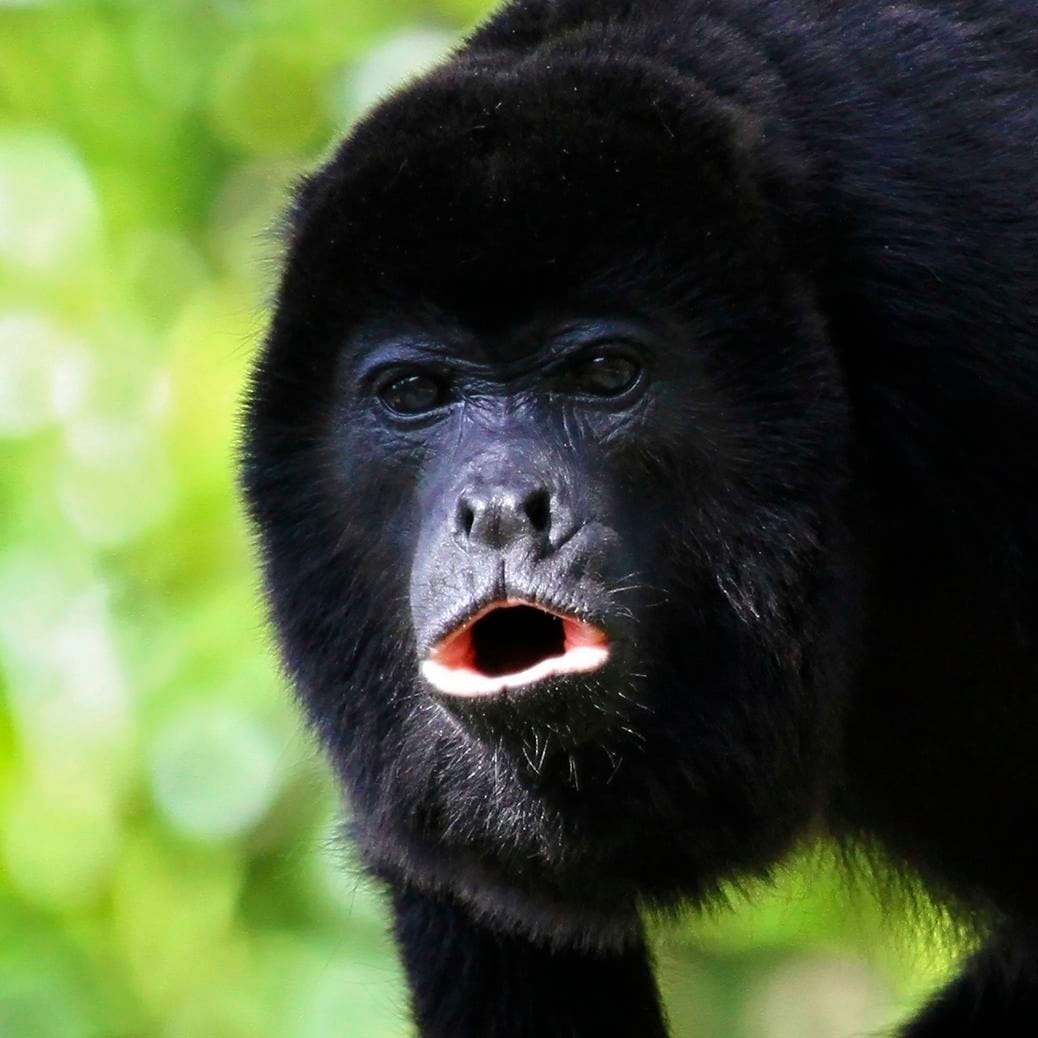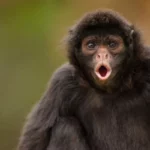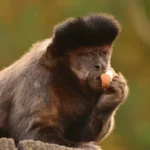Deciphering the Jungle Jive: Howler Monkey Vocalizations
Deep in the rainforest, a sound like a monster truck rally might greet you. These impressive vocal stylings belong to howler monkeys, the heavy metal singers of the animal kingdom. Their incredibly loud and complex calls aren’t just for show; they’re carefully crafted messages crucial to their daily lives.
One of their secrets is the hyoid bone in their throats. This bone, much larger in howler monkeys than in other primates, acts like a built-in amplifier. It’s a resonating chamber that gives their voices the power to reach a staggering 140 decibels – as loud as a jet engine taking off!
Howler Monkey Noise: A Language of the Wild
Their calls aren’t random; they’re a complex language with different types of calls conveying distinct messages:
| Howler Monkey Noise | Meaning |
|---|---|
| Deep Roars | “This is my turf!” (Territorial defense) |
| High-Pitched Booms | “Hey ladies!” (Mate attraction) |
| Short, Sharp Barks | “Watch out!” (Predator warnings) |
| Low Growls | Variety of social interactions |
Researchers believe that the specific combination of roars, barks, and growls conveys messages about territory, food availability, and even individual identity. Adding to the intrigue, different species of howler monkeys have slightly different “accents” or variations in their calls. For example, Mantled howlers are known for their booming roars and barks, while Red howlers have long, drawn-out calls that travel incredible distances. It’s like each species has its own dialect!
Scientists are still working to decode howler monkey communication fully, but it’s clear these noisy primates have a lot more to say. By studying their vocalizations, we’re gaining a deeper understanding of primate communication, social behavior, and the incredible diversity of life in the rainforest.
What Does a Howler Monkey Sound Like?
Howler monkeys have a distinct sound. Their calls are deep, guttural roars that seem to shake the entire jungle. Imagine the deepest, most rumbling growl amplified to an earsplitting volume. That’s pretty close to what a howler monkey sounds like.
Their calls can reach 140 decibels, about as loud as a jet engine taking off! These calls are used for different reasons, with the most famous being territory defense. A roar that can be heard for miles lets other monkey troops in the area know to steer clear.
Howler monkeys don’t just roar. They have a whole vocabulary of sounds, including grunts, barks, and other variations — almost like conversations. While researchers are still figuring out exactly what all these different sounds mean, it’s clear that howler monkeys communicate more than just territorial boundaries.
The hyoid bone, located in their throat, is the key to their loud sounds. It acts like a giant amplifier for their calls. Male howler monkeys usually have bigger hyoid bones than females, meaning their calls are even deeper and more powerful. This difference is likely a form of sexual selection, with deeper calls being more attractive to females.
Howler monkeys and their sounds give us a glimpse into animal communication. While there’s still much we don’t know, every new discovery makes the rainforest seem even more alive with hidden languages and secret conversations.
Why Do Howler Monkeys Make Noise?
Howler monkeys evolved their incredible vocal ability for important reasons beyond simply being loud.
Communication in a Dense World
One of the biggest reasons is communication. Howler monkeys live in dense rainforests with poor visibility, so they need a way to communicate over long distances. Their booming calls act like a vocal billboard, letting other howler monkey troops know their location. This strategy likely helps them avoid running into each other and potentially getting into conflicts.
Attracting a Mate and Deterring Predators
These calls are also key for finding a mate. Males probably belt out their loudest, deepest calls to impress females and show off their strength and fitness.
Howler monkey calls also play a role in defense. Their loud, intense calls could startle predators and send them running, protecting the whole troop, especially younger and more vulnerable members.
Social Bonding
Howler monkeys are highly social animals, and their calls play a big role in keeping the group connected. These vocal rituals likely strengthen their social structure and create a sense of unity within the troop.
While these are some possible explanations for why howler monkeys make noise, more research is needed to fully understand the complexities of their communication.
How Loud Is a Howler Monkey?
Howler monkeys are known for being loud, reaching a deafening 140 decibels — as loud as a jet engine taking off. This makes them the loudest land animals on Earth.
The Hyoid Bone: A Natural Amplifier
Their secret is a special bone in their throat called the hyoid bone, which is much larger in howler monkeys than in other primates. This bone acts like a giant amplifier, with their vocal cords vibrating and the sound resonating within this large, hollow bone. The result is those impressive howls that travel for miles through the dense rainforest.
A Symphony of Sounds
Their calls aren’t just about volume but are a complex form of communication. Howler monkeys use their powerful voices for a variety of purposes, including:
- Territorial Defense: Roars warn off rival troops encroaching on their territory.
- Mate Attraction: Males unleash their most impressive calls to showcase their strength and virility to potential mates.
- Social Bonding: The entire troop might join in on a chorus of howls, strengthening their social bonds and unity.
You’re most likely to hear these impressive vocal displays at dawn and dusk, when howler monkeys are most active. These times of day, often referred to as “the chorus,” are when they’re waking up or settling down for the night and are busy foraging for food, socializing, and reaffirming their place in the rainforest hierarchy.
Interestingly, howler monkey calls vary. Just like human languages have different dialects, howler monkeys in different regions have slightly different calls. Some experts believe these variations could be influenced by factors like habitat acoustics or social learning within the troop.
While their loud howls are their claim to fame, these fascinating creatures also communicate through various other sounds, including grunts, barks, and other vocalizations. There’s still much we are learning about the complexities of their communication, highlighting the need for ongoing research into the fascinating world of primate vocalizations.
If you’re looking for adventure, consider visiting guanaca in the Dominican Republic. This ecological park offers a chance to enjoy the sun, the beach, and all kinds of outdoor activities. And while you’re exploring the natural world, keep an eye out for groundhog poop. It might not be as impressive as a howler monkey’s roar, but it offers a fascinating glimpse into the lives of these amazing creatures.
- Unveiling the Enigma: Mansoureh Khojasteh Bagherzadeh’s Public Appearances & Private Life in Iran - July 18, 2025
- Unveiling the Mystery: Mansoureh Khojasteh Bagherzadeh’s Husband: A Rare Glimpse into a Private Life - July 18, 2025
- Unveiling Masoud Khamenei’s Mother: Power, Influence, and Iran’s Future - July 18, 2025
















